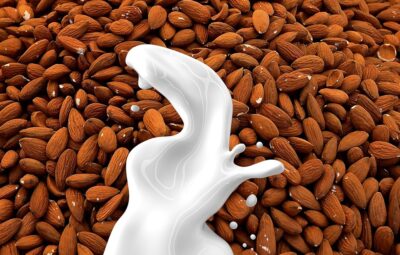Breakfast, lunch, and dinner. It has become customary for people in the present day to eat three full meals and some extra snacks in between.
People consume food from morning to night. We really enjoy food, and we don’t want to make any judgmental comments on this way of living – select the approach that works best for you.
It is clear that today’s modern world is seeing an overabundance of consumption that is linked to various diseases stemming from the consumption of large amounts of food or the intake of unhealthy food options. Our style of eating, which was developed over time, no longer coincides with the way people consume food nowadays, and this has had unwanted impacts.
What is OMAD?
The OMAD diet requires that you consume only one meal in a single day.
In the majority of situations, the duration of eating throughout the day typically occurs in a span of one to two hours. All of the calories you need for the day are consumed in a short time frame, and the rest of the day is periods of no eating. This approach is identical to adhering to an intensive version of time-restricted eating (TRF), with a 23:1 or 22:2 fasting-to-eating time span.
Doesn’t this sound limiting? What would be the purpose of confining one’s dietary consumption to such a brief amount of time? Aren’t there other better, less restrictive ways to fast?
It appears that fasting can be beneficial and backed up by science. It is likely the OMAD diet can be advantageous for some individuals if done the right way.
There is evidence that suggests that IF can be advantageous for an array of persistent health issues such as diabetes, cancer, CVD, and certain neurological ailments like Alzheimer’s. IF has been indicated to promote weight loss and bring down the possibility of suffering from cardiovascular or other metabolic illnesses.
Should you try OMAD? Let’s discuss the distinctions between OMAD and other fasting practices before we delve deeper into the details of OMAD.
How Long Until Autophagy
It is usually reported that the process of autophagy can be achieved by consistently fasting for two or three days. It is possible this is accurate for individuals on a conventional western diet plan who are consuming too many calories and carbohydrates and possessing signs of metabolic syndrome.
The level of autophagy is influenced by elements like insulin, IGF-1, glucose, and amino acids that play a role in nourishment and development. They alter the balance of building and breaking down substances in the body by managing the fuel detectors of mTOR and AMPK.
It depends on what type of nutrients your body has access to and when the process known as autophagy begins. Whenever you experience a lack of energy, AMPK is stimulated, which results in autophagy. Getting sufficient energy raises mTOR and blocks autophagy.
The more frequently you go without eating, the more autophagy your body will stimulate up to a certain limit. At some stage, you will find that the positive gain from autophagy decreases as you progress further, and it will no longer be beneficial. The amount of autophagy your body typically undergoes daily is based on the amount of calories ingested, the amount of physical activity you are doing, your stress levels, and the proportions of macronutrients present in your food.
Do You Get Autophagy Eating One Meal a Day
Eating only one meal a day is quite challenging when compared to having three meals. This is sure to lead to a significantly bigger decrease in insulin and glucose levels since they are only being spiked once. But do you get autophagy from it?
The answer to this question largely depends on what level of nutrients are present in your body and the ratio between mTOR and AMPK.
- If your energy stores are semi-depleted every day thanks to not over-eating calories, then you will dip into autophagy faster.
- If you eat sufficient amounts of calories every day and are maintaining weight or even gaining, then your levels of autophagy are lower.
- Physical exercise and stressors like saunas or ice baths promote cell turnover and AMPK activation, which speeds up autophagy.
Consuming fewer calories mimics some of the consequences of fasting; however, it may not start autophagy as a result of you consistently deactivating it through stimulating mTOR and increasing insulin. That is the explanation for why keeping meals to fewer occasions leads to more autophagy, since it helps you maintain a lower insulin level.
It all depends on the things you consume, your fitness plan, your metabolic wellness, and the macronutrient ratios in the meal you eat, whether fasting once a day can lead to autophagy. In general, those with a thinner physique and more positive health indicators will go through the autophagy process quicker and They can feel the benefits more regularly.
How Fast To Get Into Autophagy
The amount of energy stored in your body is determined by the level of glycogen stored in your liver. The liver takes care of the majority of the metabolic tasks involving separating out the nutrients to be used, determining which kind of fuel the body is burning, breaking down of fat, developing ketones, and activating cell recycling.
Liver glycogen depletion promotes ketosis, AMPK, and autophagy. When the liver’s glycogen stores have been exhausted, the body then relies mostly on glucose for energy, resulting in an increase in mTOR and insulin levels. Altogether, one hundred to one hundred and fifty grams of glycogen needs to be used up before ketones and autophagosomes can be created.
If you choose not to be active and just remain in a stationary position, the glycogen stored in the liver would be diminished in a period ranging from 20-24 hours, this time-varying dependent on the person’s metabolic capability. Activities such as working out, walking, consuming caffeine, and being under pressure can quicken the procedure.
It is contingent on the foods from the prior day and the macronutrients they contained as to whether or not you get autophagy if you eat one meal a day. A meal that is high in carbohydrates requires more work and energy to store the glycogen in the liver than a meal with a moderate or low carb content. You will need to fast for a longer duration if you consume large amounts of protein because the amino acids take a longer time to be expelled from the body. In terms of fat, it is almost unimportant compared to the overall number of calories.
Chaperone Mediated Autophagy
Ketone bodies activate chaperone-mediated autophagy (CMA), which exclusively targets certain amino acids and compounds. Ketone levels, such as beta-hydroxybutyrate, tend to be high when an individual is fasting or lacking food, but they can also increase when an individual is following a ketogenic diet.
Being in a ketogenic state while adhering to the ketogenic diet can back up the autophagy process and recycle certain proteins through chaperone-supervised autophagy. It is likely viable to do this while consuming a meal so long as the carbohydrates and proteins are at a minimum.
Consumption of fats such as MCT oil and coconut oil has the effect of increasing the amount of ketone bodies, which leads to ketosis and ketogenic metabolism. Nonetheless, you will still break your fast by increasing the mTOR and insulin levels if you consume too many calories from any of the three macronutrients, even fat. The maximum amount of ketone-stimulating fats that can be eaten during a fast is one teaspoon.
In spite of this, the ketogenic diet shares many advantages with fasting and likely encourage autophagy more quickly than other diets do. However, for that to be successful, you’d need to follow the exact nutritionally determined amounts of carbohydrates (5%), protein (15-20%), and fat (70-80%). Many people consume a greater amount of protein and carbohydrates, which is acceptable; however, this will not promote a continuing stage of autophagy.
Why Eat One Meal a Day
Is it beneficial to practice OMAD if the purpose is to stimulate autophagy? Why not try fasting for three consecutive days and then resuming a regular eating pattern?
It can be said that a 3-day fast has greater autophagic and beneficial effects than a one-meal-a-day diet or a 16-hour fast. It is much harder to maintain over an extended period of time. You would have to go without eating for a longer period less often if you followed a time-restricted eating method such as 16/8 or only eating one meal a day.
It is possible for the majority of individuals to attain their physical fitness and well-being goals via intermittent fasting without requiring them to consume numerous little meals over the course of the day. If you are not interested in the OMAD approach, then try a different plan.
For me, doing OMAD has been straightforward and attainable for an extended period of time. Though I gain health advantages, I’m not usually following the OMAD diet exclusively. Sometimes I have a large appetite, while on other days, I consume less food. That’s the kind of freedom I enjoy most.
To sum up, following an OMAD diet will surely result in a large amount of autophagy. The amount that relies on your individual dietary requirements – how many calories your body needs to use up before beginning autophagy, how much energy you must use to quicken that process, how easily you adapt to metabolizing different foods, and what type of food you consume.
FAQs About OMAD
Even if you’re already used to practicing intermittent fasting or time-restricted feeding, you may still have inquiries or worries about trying out One Meal a Day before you choose to eat that way.
It’s only natural that consuming one meal is contradictory to what we are regularly told to consider regarding how we should nourish ourselves. The following are inquiries and reviews (accompanied by responses) concerning OMAD.
Won’t I Be Hungry All the Time?
At first, maybe. Many of us have grown accustomed to consuming a consistent amount of food throughout the day by feeding three times in 24 hours since our births. Our bodies are adapted to this rhythm of eating. Going against the regular habit by consuming one large meal in a single day is a major change.
The body is conditioned to anticipate meals at particular times of the day, in addition to that. Similarly to the way a dog can tell when it’s time for its meal based on established patterns, our bodies also notify us through cues when they are expecting us to feed them. This largely stems from longtime habits related to food consumption.
Changing your eating habits will disturb your normal habits, but it’s alright. You may experience some hunger when it is time for breakfast or before going to bed. However, you will eventually get used to it.
Once you get into the habit of eating only one meal a day at a set time, you will probably start to experience feelings of hunger at that specific hour and not at other times of the day.
Additionally, if you observe a one-meal-per-day diet that is full of fat or ketogenic, you will start to become more capable of metabolizing fat for energy. When you burn fat and ketones rather than carbs, it will lead to feeling fuller for longer due to the fact that ketones have been demonstrated to suppress hormones like ghrelin which create hunger. You’ll be less hungry but still have high energy. Ketogenic diets have a very filling effect, allowing you to be content with just one meal per day so long as you make sure to eat enough of it.
Being apprehensive about beginning a One Meal a Day (OMAD) diet due to the concern of feeling hungry is justified. It looks like that after a few weeks, your system should get used to this type of diet, and you may even experience more energy and vitality than you have before.
Is it Safe to Only Eat One Meal a Day?
Some of the potential drawbacks of eating one meal a day include the potential danger of having low blood sugar, low blood pressure, or hormone imbalances.
All of these choices could be viable options– however, fasting for prolonged periods is not a good idea for certain people, such as pregnant women, adolescents, or individuals who might be prone to eating disorders or vitamin and mineral deficiencies.
For the majority of individuals, abstaining from eating more than once per day could be advantageous instead of dangerous.
In the clinical or research setting, it is rare to find reports of negative reactions from people who fast. If you are taking the necessary steps to drink enough water and supplementing with minerals when required, there is only a small chance of developing hypoglycemia or hypotension.
Making sure your single meal supplies enough macros and calories can help to make up for any nutrient deficiencies you may have. Make sure your dinner (or the meal you have chosen with OMAD) has a variety of healthy vegetables, fats, proteins, and foods that have a lot of essential vitamins and minerals.
Most people who try out OMAD are mainly consuming a high-fat or ketogenic type of diet, so they are already prioritizing nutrient-rich foods.
At first, consuming your daily caloric intake in one sitting might seem unpleasant, but you will eventually become used to it.
Some individuals on OMAD state that it is simple for them to consume 2000 or even more calories in a single sitting. It may not be as difficult to achieve as it initially appears with the inclusion of whole foods that are high in fat from animal sources and packed with nutrients.
If you’re worried about not getting enough nutrients while following a One Meal a Day (OMAD) diet, taking supplements can help, especially if you are an athlete.
An OMAD regimen that has been carefully considered is probably secure for the majority of individuals. And when done correctly, it yields several benefits.
Become a Fasting Pro
OMAD embodies the concept of biohacking, whereby one can take charge of their body and mind through the utilization of evidence-backed methods.
Rather than allowing your body to be guided by social signals, you can take control and direct how it moves and behaves. Fasting changes physiology for the better. Fasting not only produces wonderful health advantages, but it also creates a different approach to eating that numerous people find to be empowering.
Eating OMAD as part of a lifestyle is fast becoming widespread and is not simply a trend. Give it a try, and see how you feel.







